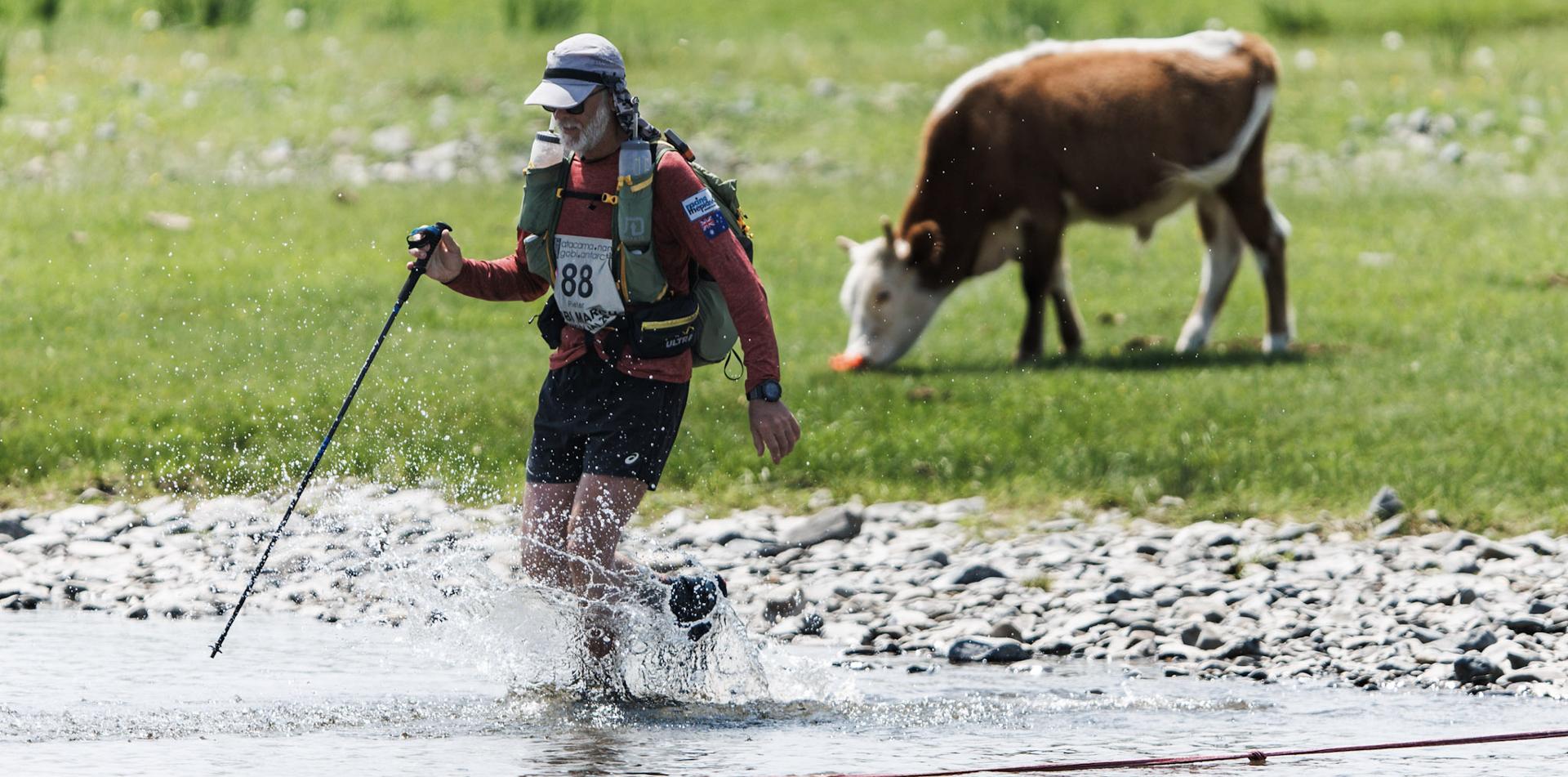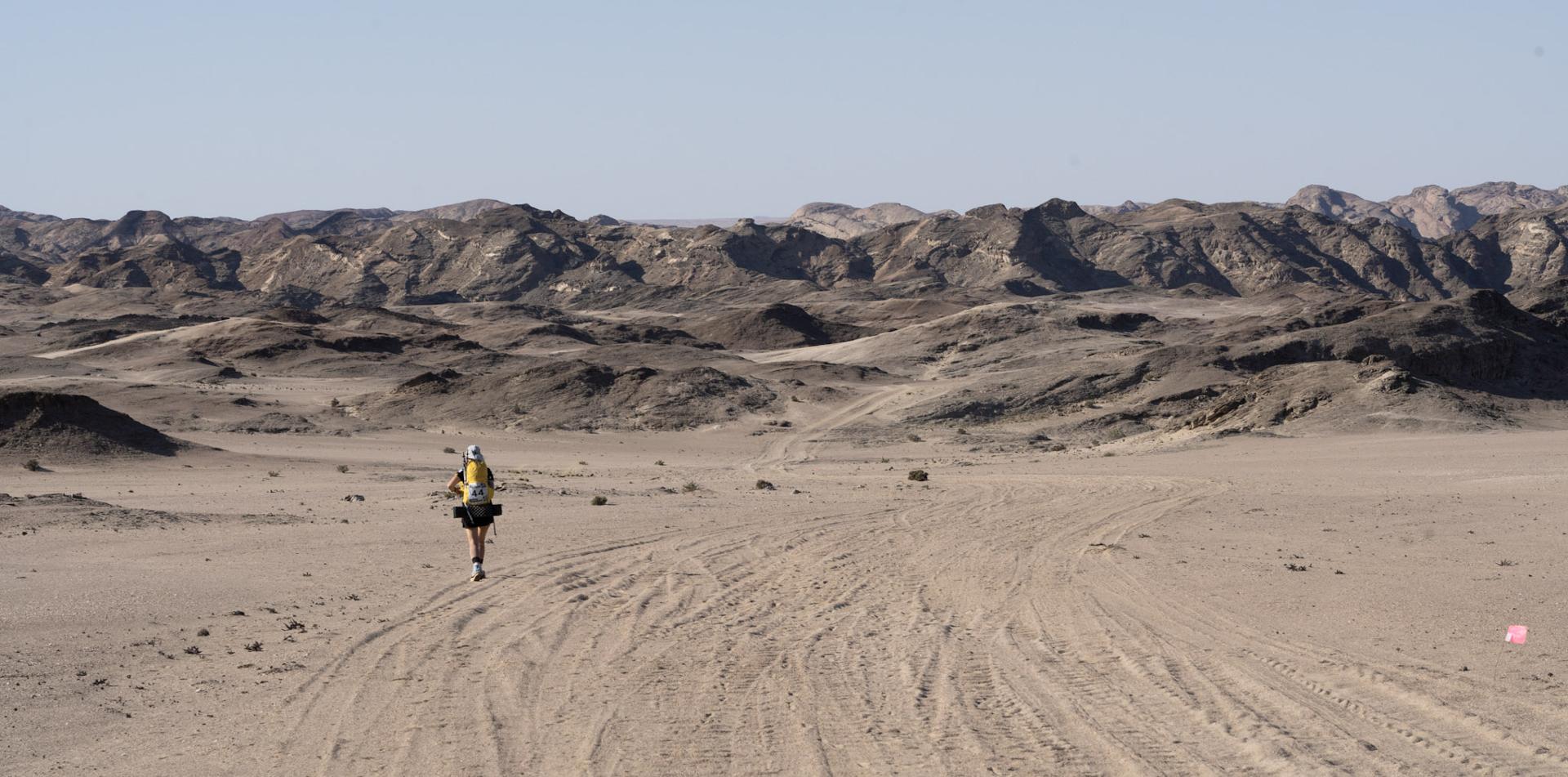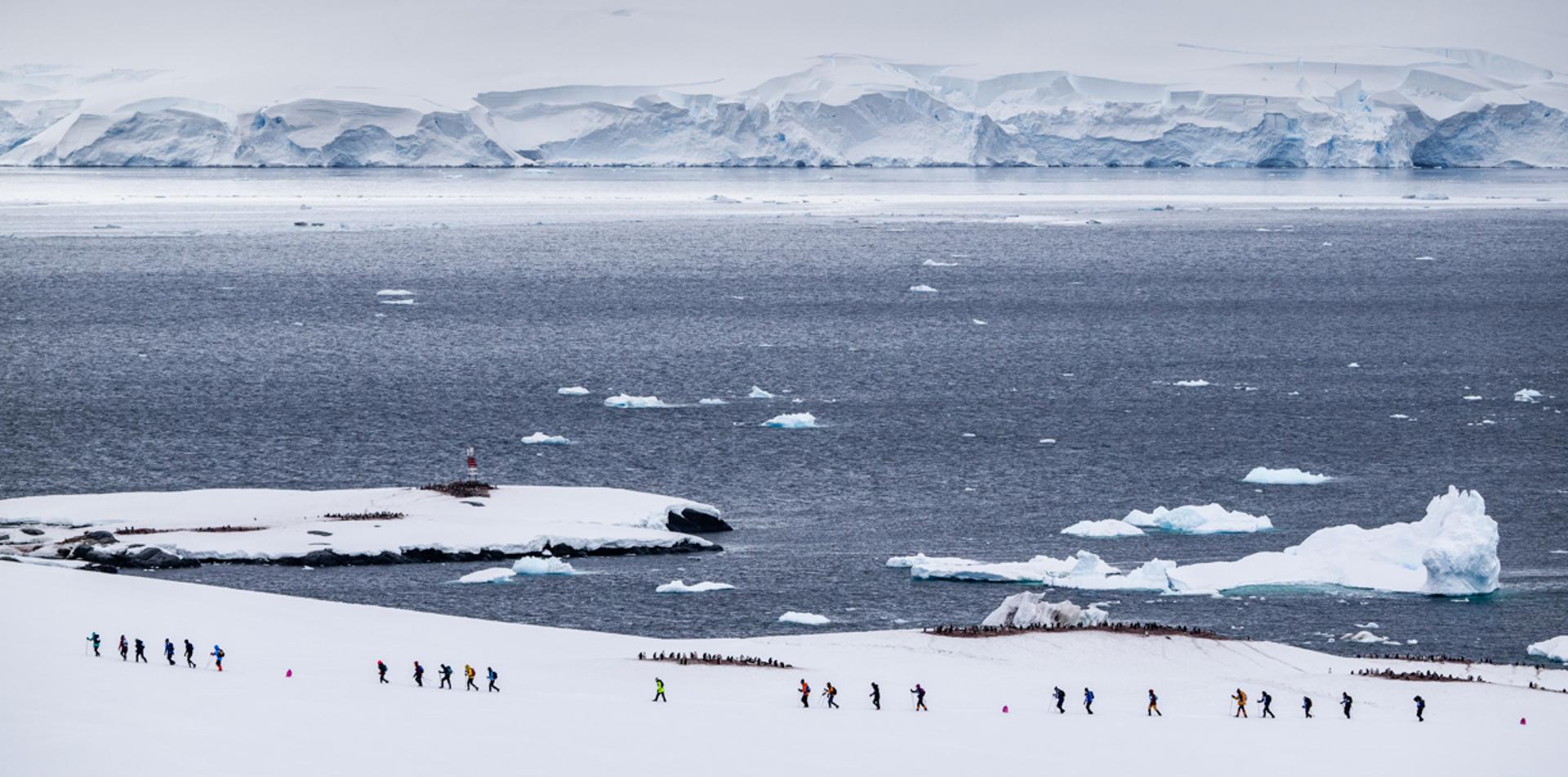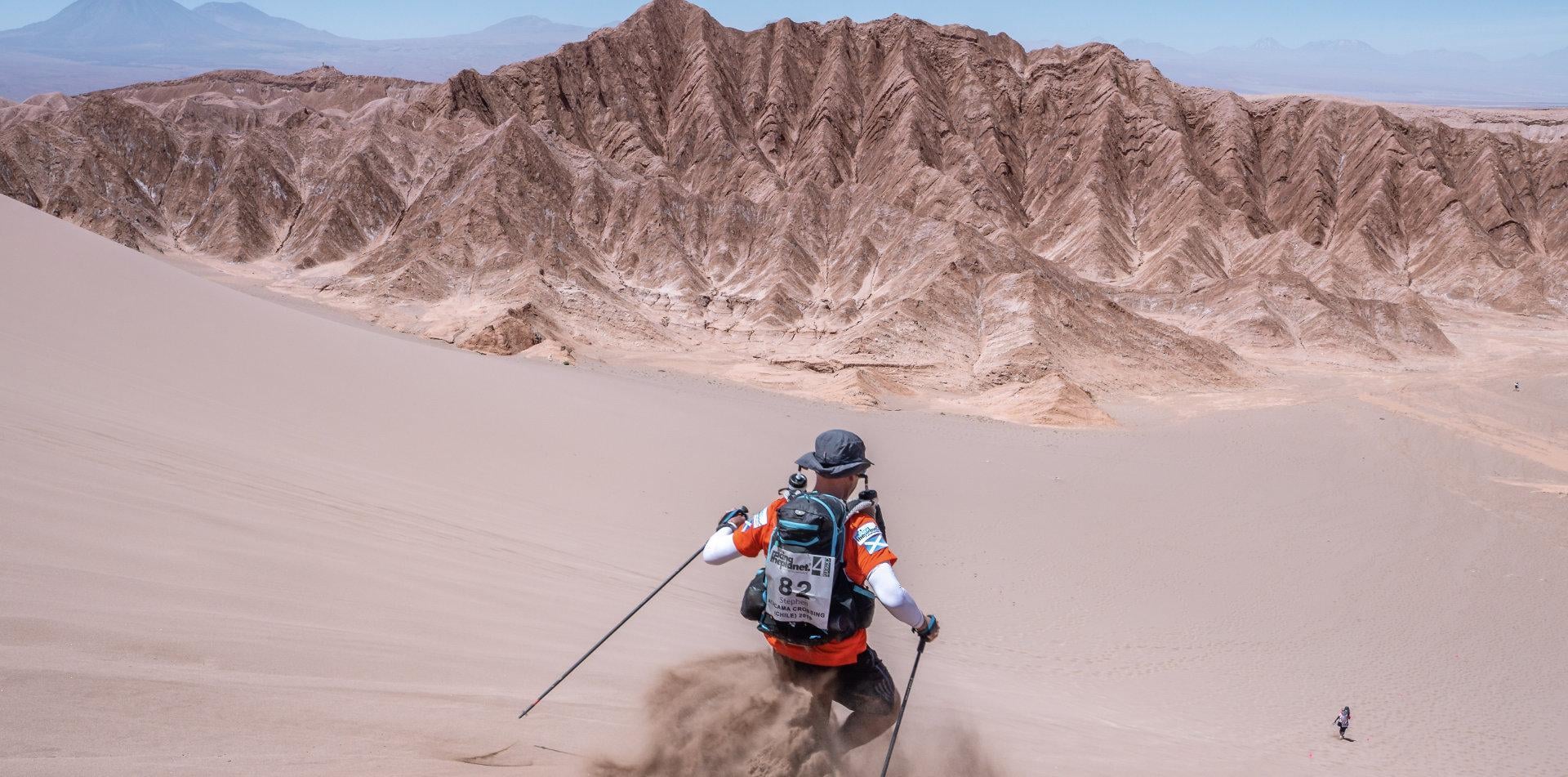RacingThePlanet Equipment - Frequently Asked Questions
This page been created to answer frequently asked questions on the RacingThePlanet mandatory and optional equipment lists.
Competitors are required to carry all mandatory equipment items. Failure to do so will result in time penalties or not being able to start the race.
An Equipment List is located on the Equipment page of the website under ‘General Information / Itinerary’ for each race. This includes examples of makes / models for each item - please study the Equipment List and ensure you have every item required.
GENERAL QUESTIONS
Q1: What is the average weight of a backpack?
A1: The average weight of a backpack at the start of a race (without water) is 9 kilograms / 20 pounds. The lightest backpack typically weights about 6 kilograms / 13 pounds. Your backpack should not weigh more than 15 kilograms / 33 pounds (try not to reach anywhere near this weight). The water that you will carry along the course will generally add 1.5 kilograms to the weight of your backpack. Practice packing your backpack with your ideal contents and head to the trails. This will help you to know how weight affects your speed and may result in changes to your personal equipment list.
Q2: How do I fit everything I need into a 25-30 liter backpack?
A2: The bigger your backpack, the more you will put inside and the heavier it will be. A heavier backpack means a higher chance of not finishing the race. Buying the lightest and most high tech equipment is easy, but you must also think about the type of equipment you need. The trick is to take only what is absolutely necessary (anything that is considered “just in case” should not be taken). If you can’t fit everything into a 30-liter (or 35-liter maximum) backpack, then you should reduce what you have or look for other makes / models of gear than you are currently using.
Q3: What if I lose an item during the race?
A3: If you lose or run out of a mandatory item during the race, you must report it to the Event Director within 30 minutes of finishing the course that day. Competitors who are missing gear may be given penalties if they do not report the item missing.
QUESTIONS ON GEAR
Q4: SHOES – Why should my shoes be bigger than the size that I normally wear?
A4: Almost every competitor’s feet will swell during the race due to the long periods of time on their feet (and your feet getting hot). We recommend wearing a pair of shoes that is one or two sizes bigger than your normal shoe size. This allows room for swollen feet to still fit comfortably in the shoe. Note that you should wear extra pairs of socks, use insoles, or utilize another method to keep your feet stable in the shoes before they swell. You can read some Practical Tips to Choose the Right Shoe in our Expert Articles section on the RacingThePlanet website.
Q5: SHOES – How many pairs of shoes should I bring with me?
A5: The minimum requirement is one pair of shoes (trail shoes are recommended more than road running shoes or hiking boots). Most competitors follow this minimum requirement. However, it is not unusual for competitors to bring a pair of camp shoes (such as Crocs or flip flops) to relieve their feet at Camp after each Stage. This second pair of shoes could also be used for water crossings.
Q6: SHOES – If it's going to be wet, should I wear Gore-Tex shoes?
A6: Gore-Tex trail running shoes are good for moist or wet ground when it's raining or after rain. However, Gore-Tex shoes do not drain so they do not allow your feet to dry once they get wet – either from sweating or water crossing. This can be an issue in hot weather when your feet are sweating a lot or if water gets into your shoes over the top. We recommend not wearing Gore-Tex shoes to hot races and emphasize good moisture management to keep your feet in good condition (see suggestions below). However Gore-Tex shoes are recommended for The Last Desert.
Q7: FOOT CARE – What is the best way to take care of my feet if they get wet?
A7: Taking care of your feet is very important to increase your chances of finishing the race. You should start taking care of your feet before the race starts and continue this until the end. Make sure you take care of a hot spot immediately before it develops into a blister. We recommend that you bring good quality socks as wet feet and ill-fitting socks are vulnerable for blisters. Double socking, anti-chafe products, such as BodyGlide, and use of paper tape, Elastikon tape and other footcare products can help. John Vonhof’s book, Fixing Your Feet, provides many valuable tips. Dr. Grant Lipman’s Wilderness First Aid Book also has a more succinct section specific to looking after your feet.
Q8: CLOTHING – Should I bring a change of clothes for every day?
A8: No! You should be bring the mandatory items in the quantities listed. As a maximum consider 1 additional running top (plus underwear for each day if you wish). The mandatory requirements for most races are:
- Running shirt and one x 1
- Warm long-sleeved top x 1 (temperatures in the desert can drop quite low at night)
- Tights / shorts x 2 (one must fully cover the legs for sun protection / warmth)
Q9: CLOTHING – I thought it doesn’t rain in the desert – why do I have rain proof equip?
A9: While deserts are called a desert because of the low rainfall, this does not mean zero rain. With such changing weather patterns around the world these days you cannot be sure of the weather or that it won’t rain. Therefore it is mandatory to bring a waterproof (and preferably windproof) jacket and rain poncho, which can easily be put on / taken off in the case of rain. The rain poncho can be used to also protect your backpack from the rain. In addition to this, a 35-liter waterproof bag is required to protect the contents of your backpack – it is important to keep your sleeping bag and extra clothing dry so that you can change clothes at Camp once you stop moving. We recommend that all your clothing is made from good quality materials that dry quickly. For socks DryMax and Injinji are brands that provide quick drying options.
Q10: WATERPROOF BAG – Can I bring a rubbish bag instead of the waterproof bag?
A10: No. Rubbish bags are not water tight and they can rip / tear easily. Another benefit of a waterproof bag is that it also helps to compress your gear.
Q11: BACKPACK – What should I consider when choosing a backpack?
A11: The backpack is one of the most important pieces of equipment. Have a look at the expert article called Choosing a Pack and remember to use your backpack in training to see what works best for you. Consider how you pack: Will the sleeping pad be attached on the outside of your backpack or does it fit inside? Where will you place your food and electrolytes for each day so that they are handy when you get the checkpoints? Thinking through these questions will help you, particularly on the first stage of the race.
Q12: SLEEPING BAG – How do I choose a sleeping bag?
A12: For most RacingThePlanet / 4 Deserts Ultras the sleeping bag must have a comfort rating down to 0°C/32°F. Modern sleeping bags often have a rating for “extreme” or “comfort” - you should always select a sleeping bag which has the required rating for the “comfort” option. A sleeping bag with a slightly higher rating than required will only be allowed if you also have an adequate sleeping bag liner. Sleeping bag liners can add up to 6°C/10°F to the rating of your sleeping bag. Read the expert article titled Understanding the Anatomy of a Sleeping Bag to help you further.
Q13: SLEEPING BAG – What is the benefit of a down vs. synthetic sleeping bag?
A13: Down sleeping bags are lighter and less bulky than synthetic sleeping bags. The benefit of synthetic sleeping bags is that they stay drier than down sleeping bags in wet or humid conditions.
Q14: SURVIVAL BIVVY BAG – Why do I need to bring a survival bivvy bag?
A14: A closed bivvy bag is a mandatory item that provides protection and helps to maintain your body temperature in an emergency situation. We specify a closed bivvy bag as this offers more protection and can also be used as an outer waterproof layer for your sleeping bag if it rains heavily during the night or is cold. The model we recommend is the Adventure Medical Kits Heatsheets Emergency Bivvy that can be used and re-packed several times.
Q15: SLEEPING PAD – Is a sleeping pad recommended?
A15: Absolutely. The tents at camp do not have ground padding, so there is no insulation or softness against the ground. A sleeping pad is not a mandatory item but it is strongly recommended as it adds comfort and warmth to help you sleep well at night. There are several models in the market. Foam pads are bulkier than inflatable pads but they are the most reliable. Therm-a-Rest has a good selection of different types of sleeping pads.
Q16: HEADLAMP – Why do I need two headlamps / lights?
A16: Your headlamps / lights are very important pieces of equipment, in particular when you are on the course in the dark – almost everyone will be on the course during the dark on the Long March. It is not unusual that a headlamp / light fails during the race, and we will not allow you to continue the race without an adequate working light source. Both lights must be strong enough to use when on the course at night on uneven terrain. You must have at least one headlamp; the second light source can be a headlamp or handheld torch. You need a red flashing light in addition to these two light sources.
Q17: RED FLASHING LIGHT – Does a red flashing light count as a headlamp?
A17: No. The red flashing light is required in addition to your two light sources – so that is 3 light sources in total. The red flashing light must be attached to the back of your backpack and turned on when you are on the course in the dark. This is a necessary safety item. A white or flashing light of another colour cannot replace the requirement for a red flashing light.
Q18: BLISTER KIT – I don’t need all of the items listed for the blister kit. Can I bring less?
A18: No. You need to carry all of the mandatory equipment items with you, even if you don’t think you will need them. Each item needed for the blister kit is clearly listed and must be included in your race gear.
Q19: COMPRESSION BANDAGE: What is this? Is it part of the Blister Kit?
A19: A compression bandage is about 10cm / 4 inches wide and about 4m / 13 feet long. It is made of stretchy material that is not sticky. It rolls up to to be a cylinder that is about 10cm / 4 inches long and has a diameter of about 4cm / 1.5 inches. It can be used to prevent bleeding of an injury, to isolate a snake bite, to add extra support to a twisted ankle or sore knee or as a sling for an injured arm. This is NOT part of the blister kit – that is a sticky tape called elastikon.
Q20: POLES – Should I use hiking / trekking poles?
A20: If you plan to walk the majority of the course you may want to consider bringing hiking / trekking poles. If you do this, be sure to train with them to get used to them. Remember that you must carry all your equipment with you for the entire race – any optional item that you choose to leave behind cannot be returned to you at a later checkpoint, camp or at the end of the race. If you are unsure whether you want to carry poles, there are some very light products in the market. If you plan to run most of the course we do not recommend poles.
Q21: WHISTLE – Some backpacks have a built-in whistle. Is this sufficient?
A21: No. Whistles built into backpacks are generally not very loud. It is required to have an emergency whistle. The model we recommend is JetScream Safety Whistle.
Q22: CAP – What can I use as a cap to cover my head and neck?
A22: It is required that you wear something to cover both your head and the back of your neck. The cap must also have a peak at the front to protect your eyes from the sun. A legionnaire cap is recommended, but you can also use a cap (with a peak) together with a Buff or scarf that covers your neck. Headwear made of breathable material is recommended.
Q23: CAP – How many hats / caps to do I need to bring?
A23: Every race requires you to bring one cap with a peak and with neck cover. Some also require one warm hat in addition. The warm hat is required for protection from the cold and will generally be worn at night. A Buff does not fulfill the requirement of a warm hat.
Q24: MULTI-TOOL / KNIFE – Can a pair of scissors be used as a multi-tool / knife?
A24: No. We recommend bringing a multi-tool with both scissors and a knife as these will be handy for many things during the race. A pair of scissors alone does not fulfill this mandatory requirement.
Q25: ALCOHOL GEL – Do I have to bring alcohol gel. Can I use alcohol wipes instead?
A25: Alcohol gel is a mandatory item for hygiene reasons. You must bring the minimum requirement of alcohol gel to the race - more is recommended. Alcohol wipes cannot replace alcohol gel but you must bring some in addition as part of your blister kit.
Q26: GAITERS – I notice these are not compulsory, should I bring them?
A26: If you are doing the Sahara Race, we strongly recommend wearing gaiters as the course is largely sand. Purchase gaiters that cover the entire top of your shoes to prevent sand from getting in and causing discomfort and blisters. The Atacama Crossing and Gobi March also have sandy, dusty, stony sections where gaiters can be very useful.
Q27: PATCHES – Is it compulsory to wear RacingThePlanet / 4 Deserts logos and nationality flags on my tops?
A27: Yes. These patches have to be on both sleeves of every shirt and jacket that you take to the race. Follow these important points below:
- The RacingThePlanet / 4 Deserts patch must be located above the nationality patch.
- All patches must be the correct way around (i.e., you cannot have the RacingThePlanet / 4 Deserts patch placed on their side).
- The tops that you wear must have sleeves to put the patches on.
- Patches must be securely attached (ideally stitched). Attachment with safety pins is not acceptable. Silk screening is another very attractive alternative.
- Silk screening is a great choice if you’re looking to avoid needle holes.
- If you are concerned that the patches will ruin your jacket, you can choose another jacket or an alternative method of attaching the patches. Silk screening is the ideal choice to prevent this.
- If your patches are not correct at Competitor Check-In or you are seen during the race with incorrect or missing patches, penalties will apply. The Rules & Regulations detail the specific time penalty for each offence.
RacingThePlanet / 4 Deserts patches (8 pieces) will be sent to you in the post approximately two months before the race with instructions on how to attach them. Nationality patches must be sourced by competitors. A selection of nationality patches is available at the RacingThePlanet Store.
Q28: PATCHES – Do I need to have patches on my waterproof jacket?
A28: Yes. These patches have to be on both sleeves of every shirt and jacket that you take to the race. If you are concerned that the patches will ruin your jacket, you can choose another jacket or an alternative method of attaching the patches. Silk screening is the ideal choice to prevent this.
QUESTIONS ON NUTRITION
Q29: FOOD – How much food should I bring?
A29: The minimum requirement of food is 2,000 calories per day – that is 14,000 calories that you must start Stage 1 of the race with – this is to last for the duration of the race. However, this is a minimum and you may want to consider to bring up to 3,000 calories per day – I would not recommend to bring more than this. We recommend that you bring some more substantial meals (freeze-dried meals, noodles or actual “real food’) do not rely only on powders, energy bars and gels.
As a note - active women consume approximately 2,300 calories per day and active men around 2,500 calories per day. Treat these figures as a reference as every person is different.
In addition to the 14,000 calories for the race, you need to bring a meal for Camp 1.
- Variety is key
- Don’t just rely on the calorie count, make sure you have tried and like the food you bring.
Q30: FOOD – What is the difference between gels and bars?
A30: Energy gels and bars provide energy for exercise, promote recovery and are a good source of energy when you are on the course and don’t have equipment or time to prepare more substantial meals. The nutritional composition and amounts vary depending on the product. Some contain more carbohydrates, some more proteins. Gels contain only approximately 40 calories but they are the quickest energy source – they release energy in 5 minutes. Bars contain more energy, approximately 200 calories per bar, but their energy release is slower at approximately 20 minutes.
Q31: WATER – How much water will I receive at each checkpoint?
A31: You must leave every checkpoint with a minimum of 1.5 liters. There may be times when you may be allowed or required to take more water. Checkpoints are located on the course at approximately 10 kilometers / 6 miles. At the final checkpoint of the day you are given 4.5 liters of water – this is for the rest of that day, that night, the following morning and the first section of the course of the next day (to Checkpoint 1).
Q32: WATER – Why do I need to carry a hydration system capable of carrying 2.5 liters?
A32: You need to carry containers (bottles or bladders) that allow you to carry 2.5 liters or fluid in total. These containers must be with you even when they are not full. The standard allocation of water to be given to you at each checkpoint is 1.5 liters; In addition to this, you must have a separate Platypus SoftBottle for 1.0 liter (or 2 soft bottles for 0.5L), which folds up inside your backpack, when not being used. Drinking bottles can be attached to backpacks with bottle holders. Bottles are quick and easy to fill at checkpoints and enable you to check quickly how much water you have left. Having two bottles allows you to keep plain water in one and electrolytes mix in another. Bottles also help distribute weight so that it's not all on your back.
Q33: WATER – How is water dispensed at checkpoints and Camp?
A33: In order to be more environmentally-friendly we aim to us large bottles at each checkpoint from where you refill your own containers for water by pouring or pumping the water. Therefore, you must always be capable to carrying 2.5 liters of water at any time. At Camp you are not required to take the full 4.5 liters of water at one time but can fill your containers throughout the afternoon, evening and night. Do take note of how much liquid you are consuming as the 4.5 liters is calculated as being a normal amount to consume. Consuming too much water can be even more dangerous than not drinking enough!
Q34: ELECTROLYTES – Should I use electrolytes drink mixes or salt tablets?
A34: Electrolytes are mandatory but the choice of which format to bring is up to you. You may choose salt tablets (such as SaltStick), electrolyte drink mixes (powder or dissolvable tablets – such as Nuun) or a combination of both. Please refer to the equipment list for recommended amounts. It is essential to take care of your electrolyte balance as you will lose a lot of salt through your sweat. Make sure to test your nutrition and electrolytes during training. You can find out more about Role of Electrolytes to help you make your final choices.
Click here to download a PDF of these FAQs.







 Newsletter
Newsletter
 Online Store
Online Store





